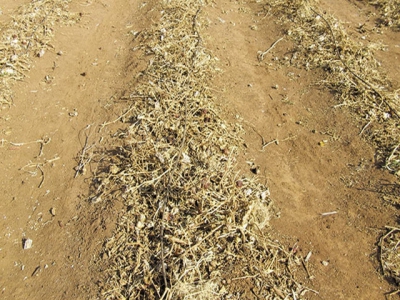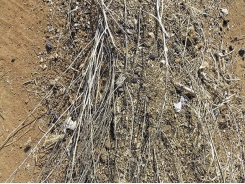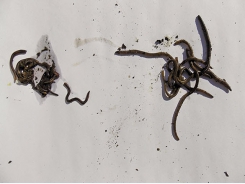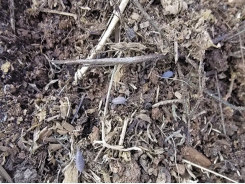No-till vegetables: how to grow them

No-till vegetable production is not practical for everyone and is more suited to the small-scale organic farmer.
I’m well aware that no-till vegetables is not practical for everyone and is more suited to the small-scale organic farmer.
Neither is it compatible with mechanised farming. Nevertheless, some of its practices and principles can be applied to a number of farming systems.
We know that tillage is seldom good for the soil, but it is often a necessary evil. Thus, when we do till, we should always be careful to disturb the soil as little as possible.
Till or no-till vegetables
I know of vegetable farmers who do deep ripping on occasion. When I ask them why, they cannot give me a good explanation other than that they feel it’s good to loosen the deeper layer for water and root penetration.
They may well be right, but this will depend on whether a hard or impervious layer is present in the soil. A plough pan, for instance, could be one justification for deep ripping.
However, the majority of farmers employ this practice without knowing if it’s really needed or not.To determine if deep ripping is required, use a steel probe, auger or test hole beforehand. This may prevent you from wasting money unnecessarily and perhaps doing more harm than good.
Avoiding or limiting tillage saves a great deal of money on diesel and equipment. Small-scale farmers in particular can really benefit and boost their profits. They should also consider hiring a contractor to carry out the soil preparation before going no-till rather than investing in expensive implements.
Making the switch
To switch to no-till vegetables, your first step is to arrange for a thorough soil analysis. You will probably have to add a quantity of lime, especially if starting off with virgin soil. Work the lime into the soil during the initial land preparation as lime moves very slowly through the soil.
Also incorporate as much organic material into the soil as you can afford. Depending on your locality and the availability of manure, try to add a fair quantity of cattle manure – 50t/ha would not be too much. If you are farming organically, you cannot use chemical fertilisers.
You can, however, increase the phosphorous level in the soil by adding poultry manure as well. Work everything mechanically into the soil. After this, start forming the beds. As these will be permanent, take care to get them straight and uniform.
A thing of the past
All subsequent fertilisation, whether chemical or organic or both, is applied to the beds only. The space between the beds is waste ground or a path, so direct all attention to the beds.
Mine were created some 13 years ago and have not been disturbed since. Results are getting better and better, while costs are dropping. The real benefits will take a few years to manifest as the organic content increases and the soil life gets into balance.
However, it’s worth the wait. For one thing, eelworm and soil diseases become a thing of the past and nutrients are recycled, and not lost by leaching.
Getting enough
One of the problems with organic production is to supply nitrogen. When visiting organic farms, I often find that, in crops requiring a higher level of nitrogen, the yield is lower because the plants do not have enough nitrogen in the late stage of development.
Organic nitrogen is not available on its own; it is always supplied as a component of a mixture. This means that when you increase the nitrogen content of the soil, you add other elements at the same time, and these may accumulate and become detrimental.
Such problems do not exist when the soil has sufficient organic content with balanced, undisturbed microbial life.
It will produce, and recycle, nitrogen. I farm for years without adding nitrogen and have more than enough for all my vegetables.
Related news
Tools

Phối trộn thức ăn chăn nuôi

Pha dung dịch thủy canh

Định mức cho tôm ăn

Phối trộn phân bón NPK

Xác định tỷ lệ tôm sống

Chuyển đổi đơn vị phân bón

Xác định công suất sục khí

Chuyển đổi đơn vị tôm

Tính diện tích nhà kính

Tính thể tích ao




 Making no-till beds
Making no-till beds  Useful soil organisms
Useful soil organisms